POCUS (Point-of-Care Ultrasound) refers to the use of portable ultrasound machines at the bedside (Emergency Medicine, Critical Care, and family medicine settings) or Point of injury (EMS, Paramedic, or Pre-hospital settings) to obtain real-time images of internal organs and structure. POCUS allows for immediate assessment and diagnosis directly where patient care is being provided.
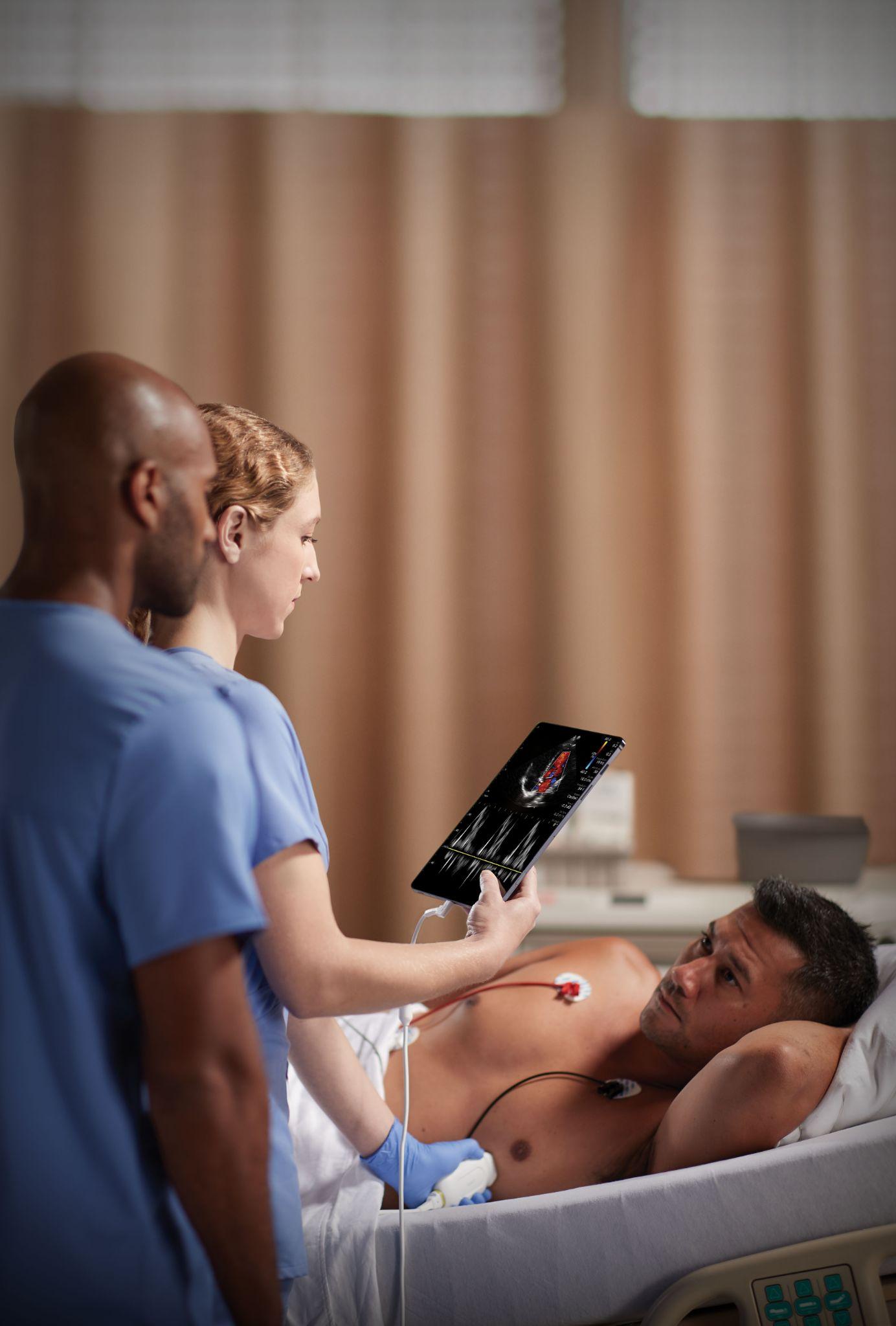
POCUS
POCUS specifically refers to the use of portable ultrasound machines by healthcare providers directly at the point of care. This term emphasizes the immediate use of ultrasound for diagnostic or procedural purposes during routine patient assessment or interventions. POCUS is typically performed by frontline healthcare providers, such as emergency physicians, intensivists, military medics, EMT’s, paramedics, nurse practitioners, physician assistants, CRNA’s, athletic trainers, chiropractors, primary care physicians, etc.
POCUS often involves focused ultrasound examinations targeting specific clinical questions or indications rather than comprehensive imaging studies. It reflects a growing trend towards integrating ultrasound into routine clinical practice across various specialties.
Common settings for POCUS include:
- Pre-hospital (EMS / EMT)
- Emergency Departments
- Critical Care
- Trauma
- Austere / Rural
- Family Practice
- Sports Medicine settings
- Anesthesiology
- Military
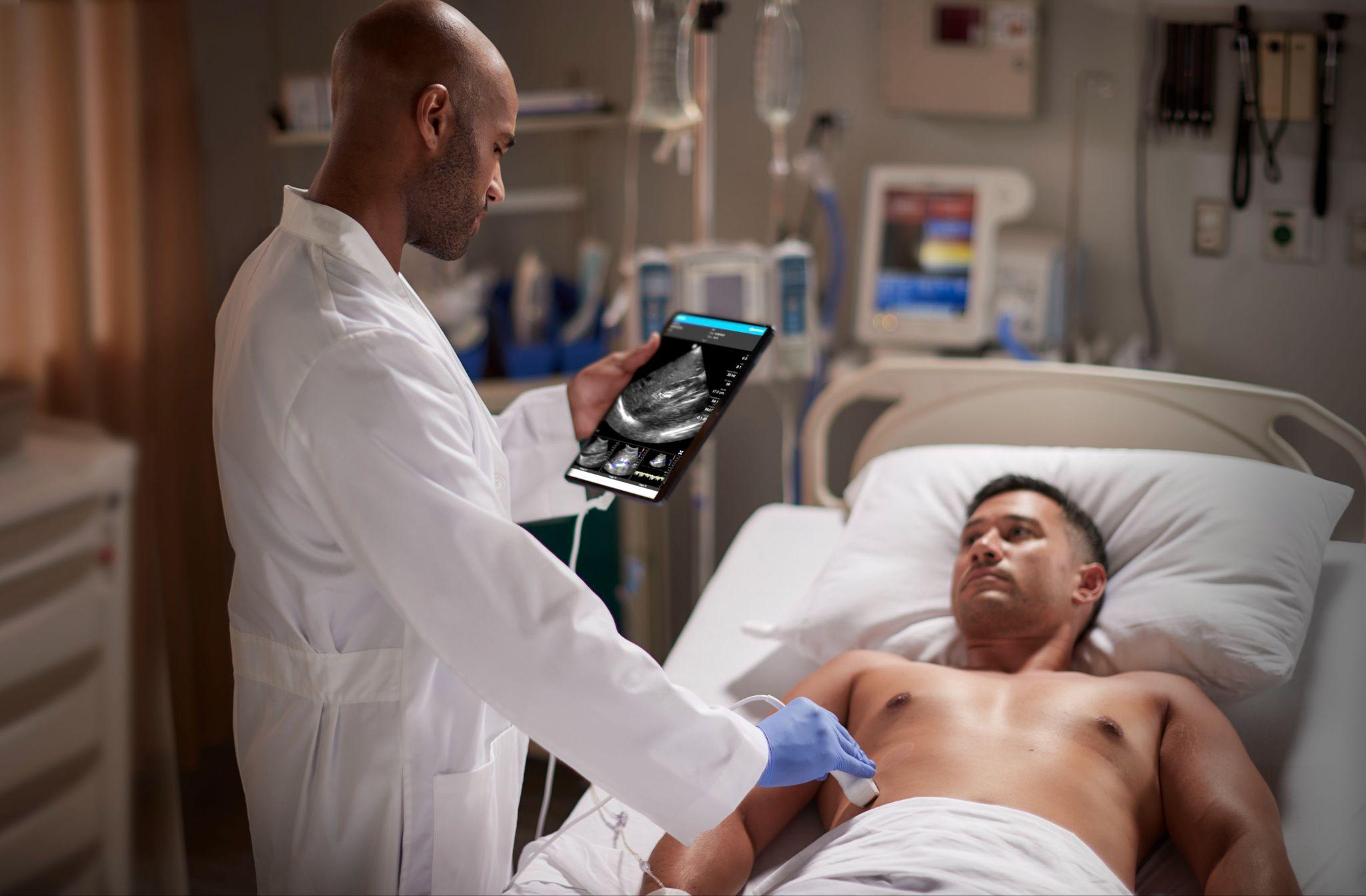
Key Features
One of the key features that distinguish POCUS (Point-of-Care Ultrasound) from traditional ultrasound imaging modalities is its remarkable portability and real-time imaging capabilities. Unlike conventional ultrasound machines, which are typically large and stationary, POCUS devices are compact, lightweight, and portable. POCUS systems range in size from hand-held devices to lap-top or small cart-based systems which enables healthcare providers to carry the ultrasound equipment directly to the patient's bedside or point of care, facilitating immediate assessment and diagnosis without the need for patient transportation to radiology departments or specialized imaging suites.
POCUS excels in providing real-time imaging capabilities, allowing clinicians to dynamically visualize internal structures, organs, fluid, blood vessels, nerves, and even foreign bodies like splinters, metal, or glass pieces.
The ultrasound images are generated and displayed in real-time on the device's screen, enabling immediate interpretation and analysis. This real-time feedback is invaluable in clinical decision-making, as it allows healthcare providers to assess dynamic changes, such as cardiac function, blood flow, and organ motion at the patient location.
POCUS plays a crucial role in enabling rapid assessment and decision-making across a wide range of clinical settings by providing immediate access to diagnostic information directly at the point of care.
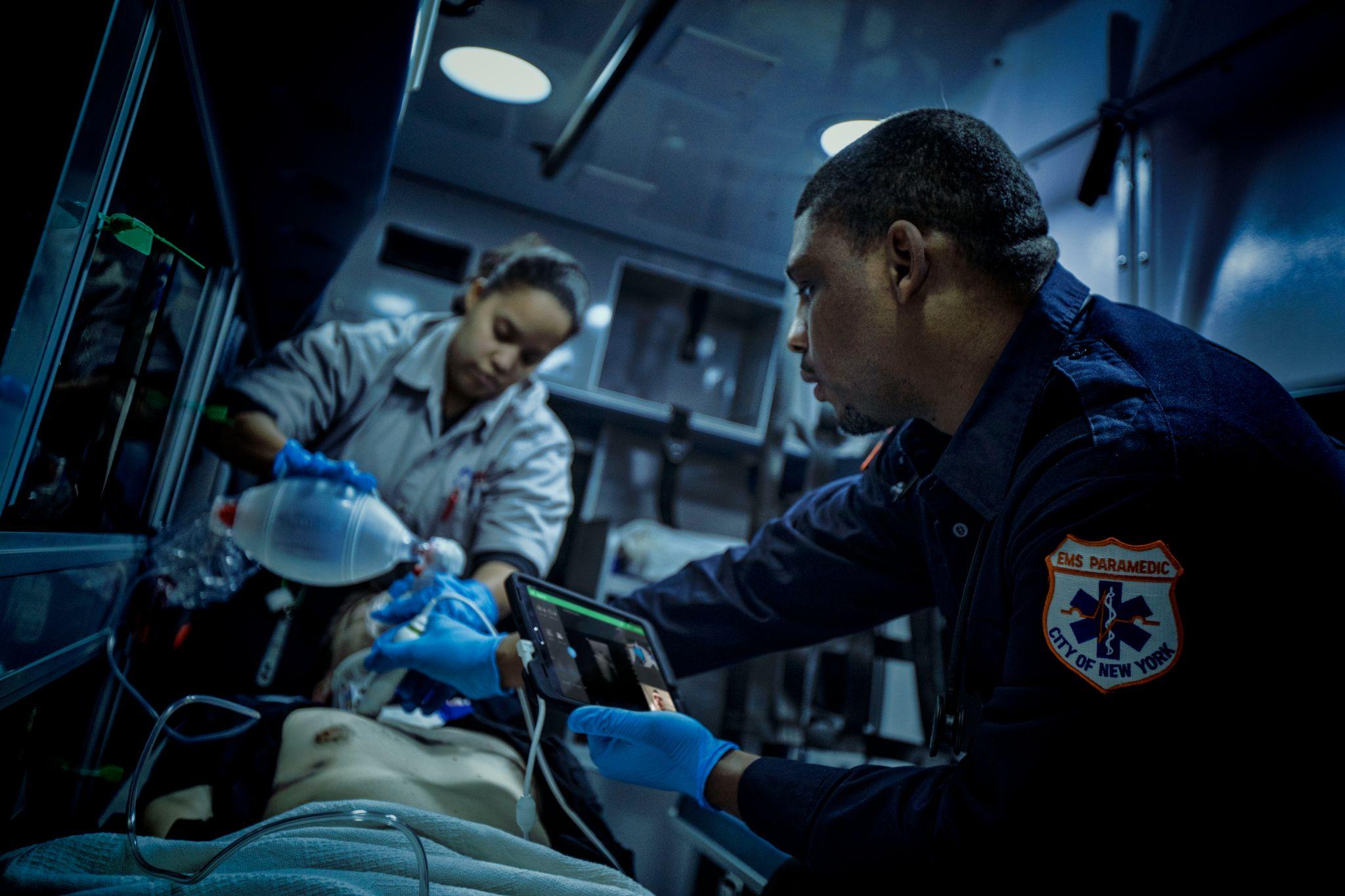
POCUS Uses, Applications and Advantages
POCUS, or Point-of-Care Ultrasound, serves as a versatile diagnostic tool across multiple medical specialties. It enables rapid assessment of trauma patients, evaluation of heart function, cardiac activity during arrest, and detection of life-threatening conditions like pneumothorax, pulmonary embolus, and cardiac tamponade. Additionally, POCUS aids in diagnosing abdominal aortic aneurysms, thyroid nodules, and soft tissue injuries facilitating early detection and management of various conditions.
Emergency Medicine
In emergency medical settings, POCUS (Point-of-Care Ultrasound) plays a pivotal role in various critical situations, including the rapid assessment of trauma patients and evaluation of cardiac activity during cardiac arrest. The following is a brief description of some emergency medical uses of POCUS
Trauma Patient Assessment
POCUS rapidly identifies life-threatening injuries like pneumothorax, hemothorax, and intra-abdominal bleeding, guiding urgent interventions in trauma resuscitation.
Cardiac Arrest Evaluation
POCUS assesses cardiac activity during arrest, detecting reversible causes like tamponade or pulmonary embolism, and guiding immediate interventions for improved outcomes.
Pneumothorax Identification
POCUS quickly detects pneumothorax by visualizing lung movement, allowing prompt interventions like chest tube placement to enhance patient survival.
Fluid Status and Hemodynamic Evaluation
POCUS provides real-time assessment of fluid status and hemodynamics, guiding fluid resuscitation strategies for improved outcomes in shock patients.
Endotracheal Tube Placement Confirmation
POCUS verifies correct endotracheal tube positioning, ensuring effective ventilation and reducing complications during emergent intubations.
Procedural Guidance
Ultrasound guided procedures can reduce potential complications, increase procedural accuracy, and improve patient safety.
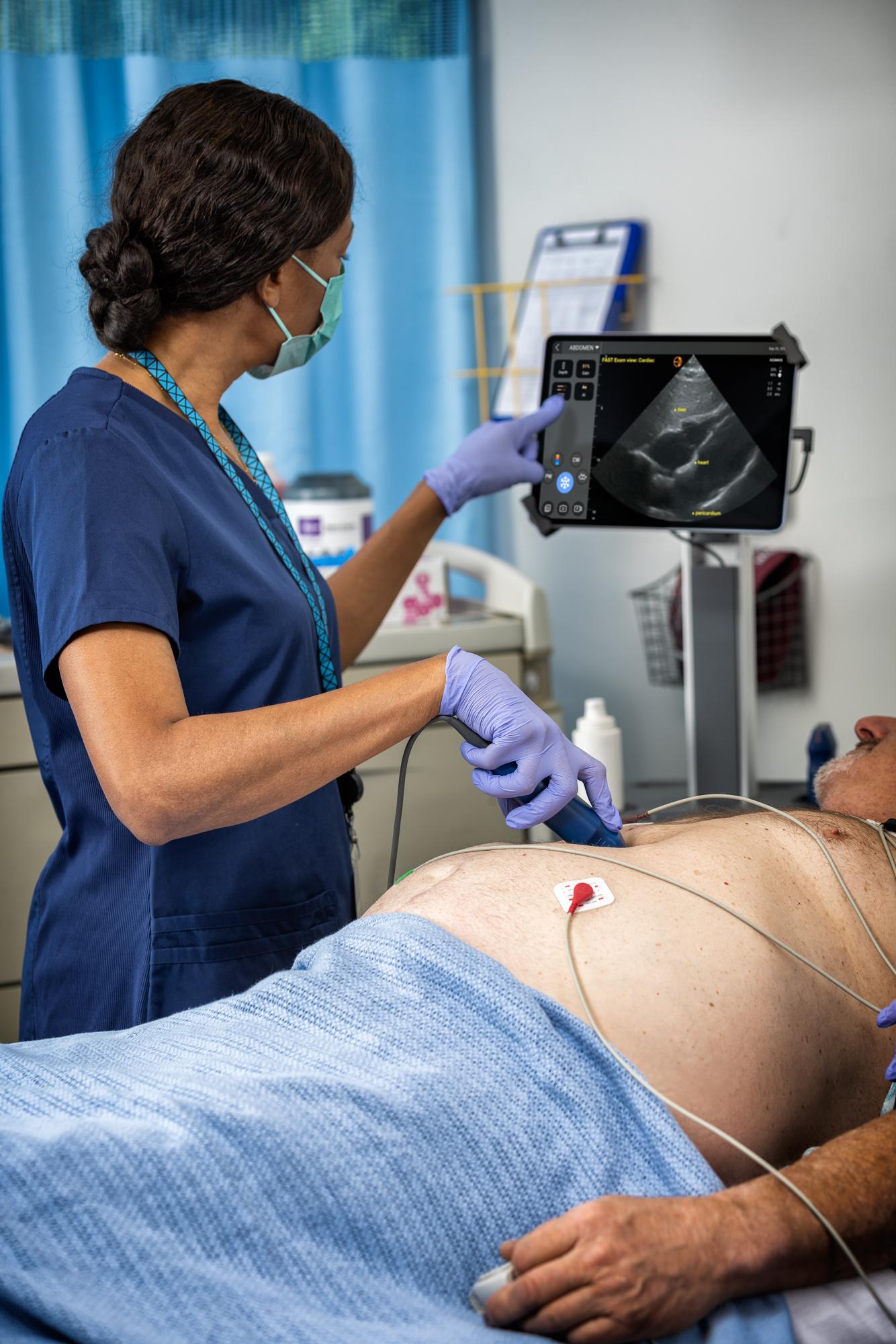
Critical Care
In critical care settings, POCUS (Point-of-Care Ultrasound) is indispensable for assessing various conditions and guiding management decisions. The following are brief descriptions of critical care uses
Cardiac Function Evaluation
POCUS quickly assesses cardiac function by visualizing chambers, valves, and contractility, guiding hemodynamic management in critically ill patients.
Pleural Effusion Detection
POCUS is highly sensitive for detecting pleural effusions, aiding in diagnosing and managing respiratory compromise, with guided thoracentesis improving lung function.
Deep Vein Thrombosis (DVT) Diagnosis
POCUS effectively diagnoses lower extremity DVT by assessing venous compressibility and flow patterns, enabling prompt initiation of anticoagulation therapy to prevent complications like pulmonary embolism.
Anesthesiology
In the field of anesthesiology, POCUS (Point-of-Care Ultrasound) is increasingly utilized to enhance patient safety and improve the accuracy of various procedures as well as pain management purposes.
Guidance for Regional Anesthesia
POCUS aids in nerve blocks and epidurals by visualizing structures in real-time, improving needle placement accuracy and reducing complications.
Airway Anatomy Assessment
POCUS assists in evaluating airway anatomy pre-intubation, identifying potential challenges and optimizing management strategies for successful intubation in critically ill patients.
Confirmation of Endotracheal Tube Placement
POCUS verifies proper endotracheal tube position, ensuring adequate ventilation and reducing complications associated with misplacement.
Assessment of Cardiac Function
POCUS enables real-time assessment of cardiac function and volume status, guiding fluid management strategies and improving patient outcomes during surgery.
Gastric Ultrasound for Aspiration Risk Determination
With the increasing use of GLP-1 agonists (semagludtide) with brand names such as Ozempic and Wegovy. These slow the process of gastric emptying increasing the risk of aspiration during procedures involving anesthesia. POCUS can easily detect contents in the stomach altering how treatment is administered.
Family Medicine / Primary Care
POCUS serves as a valuable tool for family medicine/primary care providers in detecting multiple conditions early, thus enabling appropriate management, reducing patient, cost, and time to travel to imaging facilities. POCUS enhances diagnostics and patient care by enabling the following
Abdominal Aortic Aneurysm (AAA) Screening
POCUS helps identify AAA risk in at-risk patients, aiding in timely referrals and preventive strategies.
Abdominal evaluation of organ pathology such as various liver, biliary, or renal conditions.
Thyroid Evaluation
POCUS assists in detecting thyroid nodules or abnormalities, guiding management decisions and reducing unnecessary interventions.
Soft Tissue Injury Assessment
POCUS aids in evaluating injuries like tendinosis, joint effusions, abscess, cellulitis, and guiding precise treatments for improved outcomes.
Focused Cardiac Evaluation
Assess cardiac function, pericardial and pleural effusions.
Evaluation of deep venous thrombosis vs superficial phlebitis
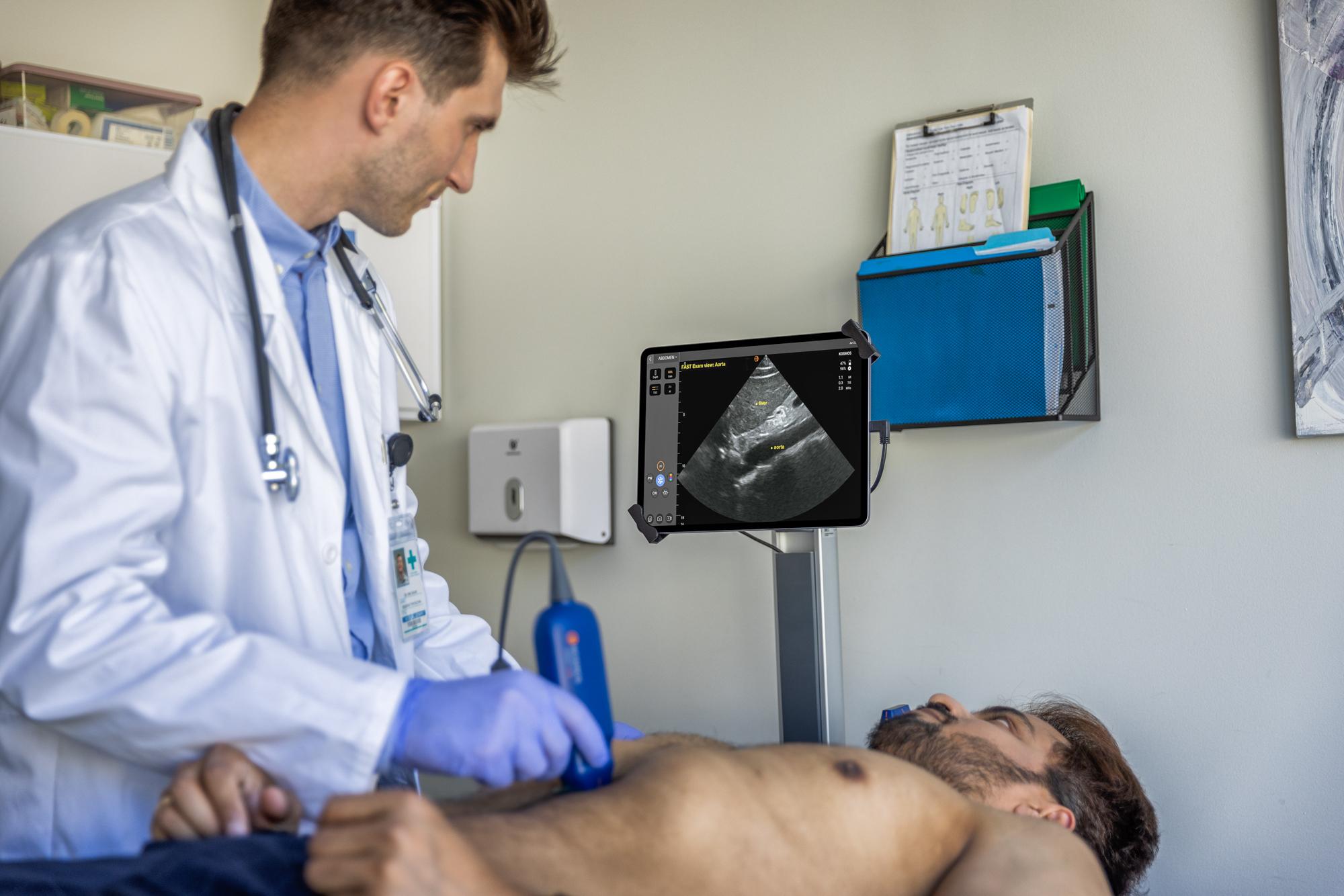
Obstetrics and Gynecology
In obstetrics and gynecology (OB/GYN) practice, POCUS (Point-of-Care Ultrasound) is crucial for various diagnostic and management purposes. It helps confirm intrauterine pregnancies, diagnose ectopic pregnancies early, assess fetal viability and growth. POCUS also aids in evaluating gynecological disorders like uterine fibroids and endometrial abnormalities, and ovarian cysts/mass, and guiding treatment decisions. Its real-time imaging and non-invasive nature make it an essential tool in OB/GYN for prompt diagnosis and effective management.
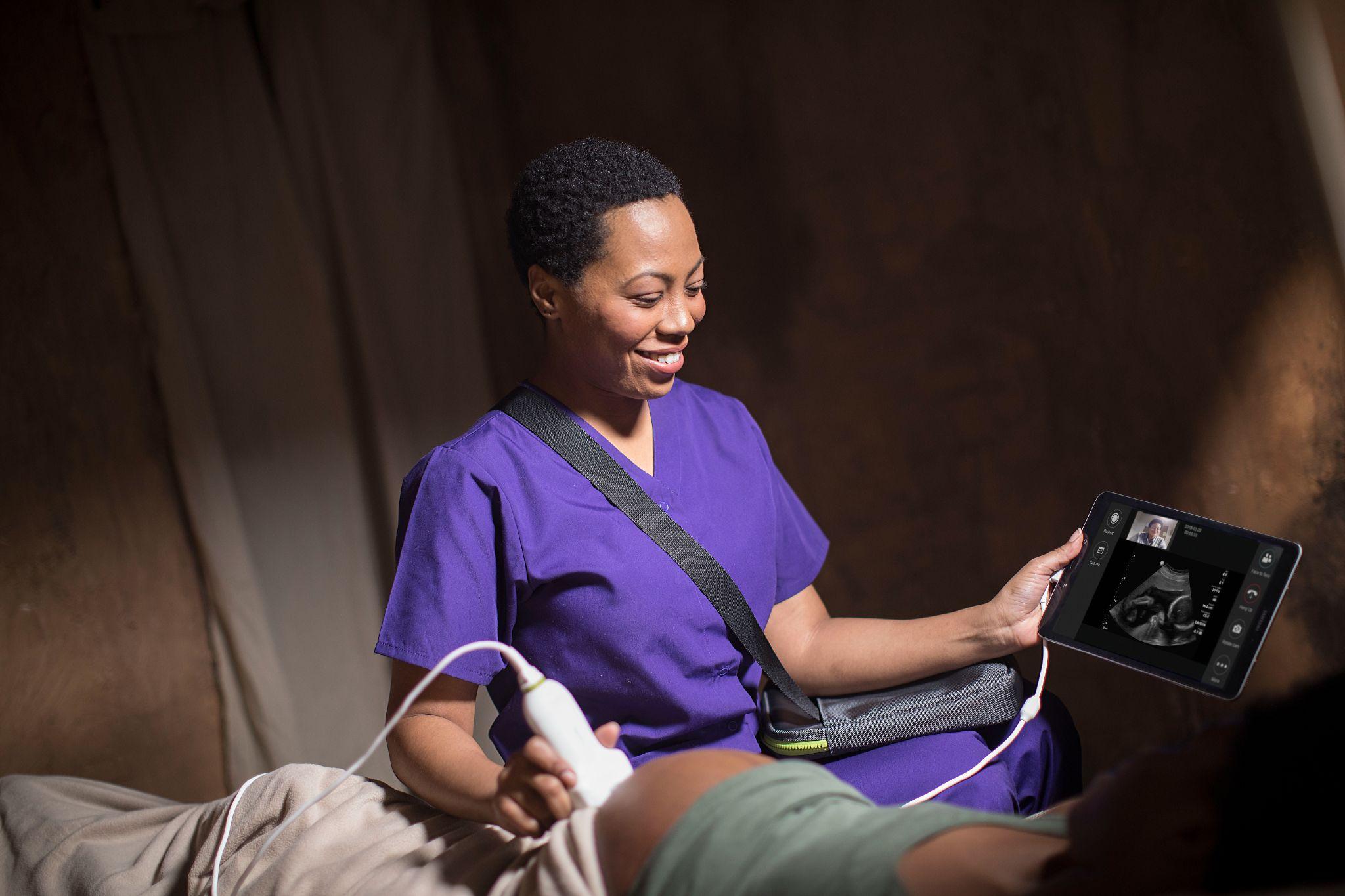
Musculoskeletal Medicine
Musculoskeletal medical providers utilize POCUS to assess soft tissue injuries, diagnose tendon and ligament tears, tendinosis, or other conditions, monitor joint effusions, aspirating fluid, and guiding injections for pain management and regenerative medicine treatments. This imaging modality offers real-time visualization of soft tissue structures, facilitating accurate diagnosis and treatment planning, including ultrasound-guided injections ensure precise targeting of therapeutic agents, improving treatment efficacy and patient outcomes in musculoskeletal medicine.
Rural Medicine
Remote medicine (RM) practitioners also employ Point-of-Care Ultrasound (POCUS) for screening, diagnostic, and treatment purposes. POCUS allows for the rapid assessment and diagnosis of conditions such as deep vein thrombosis (DVT), abdominal pathology, ascites, pleural effusions, and trauma, directly at the point of care, even in remote settings. Its portability and versatility make POCUS particularly useful for RM providers, enabling them to enhance diagnostic accuracy, facilitate timely intervention, and improve patient outcomes, especially in situations where access to traditional medical imaging modalities is limited.
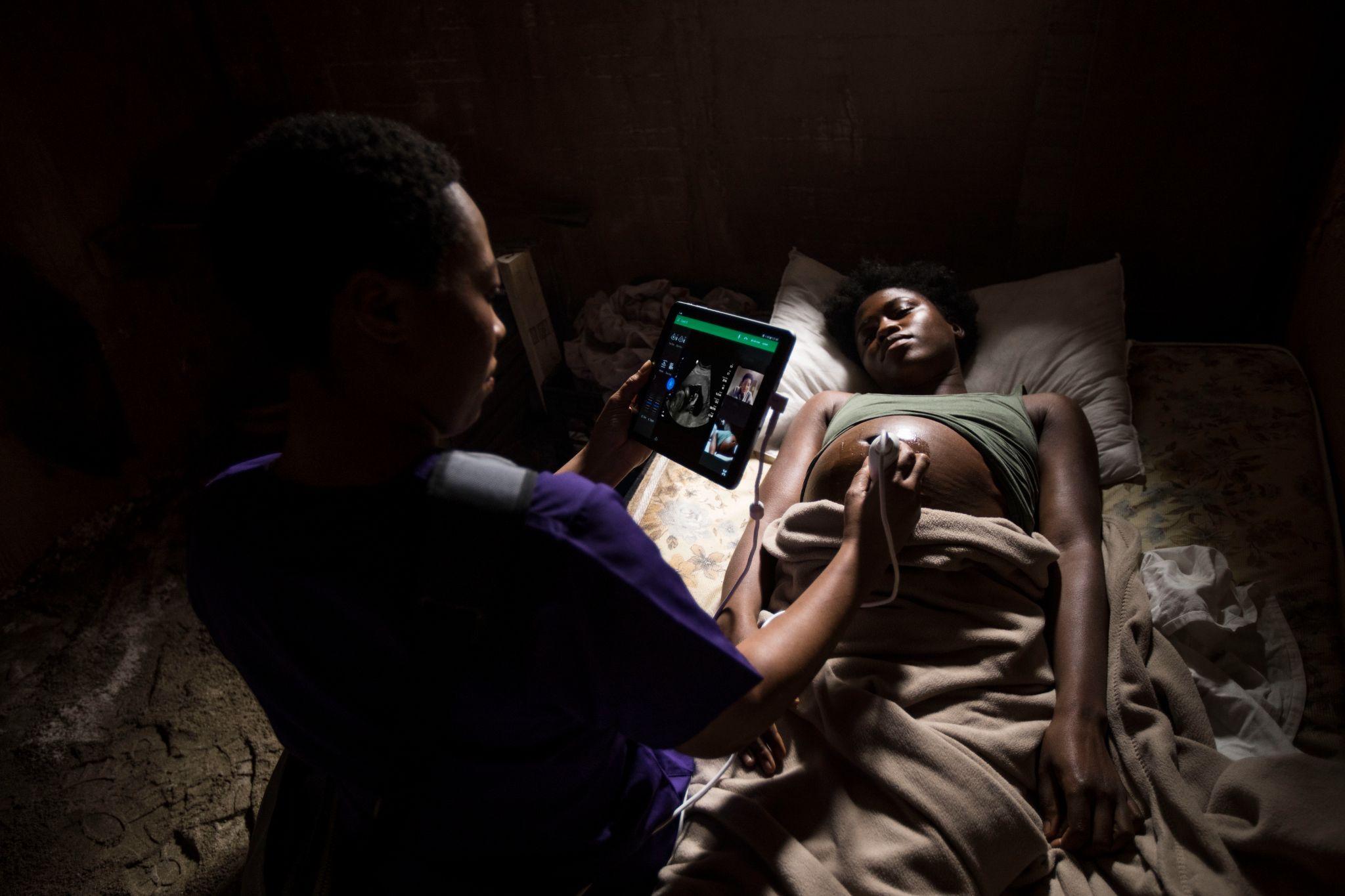
Military Applications
POCUS is perfect for use in Tactical Combat and Casualty Care settings (TCCC) where diagnostic resources are limited and patient extraction is difficult. Focused assessment of most medical conditions can be performed including trauma, musculoskeletal / soft- tissue, focused cardiac, evaluation of shock & hypotension, and performing ultrasound guidance for a variety of interventional procedures which is critical to patient outcomes.

Select the Right Equipment
Incorporating Point-of-Care Ultrasound (POCUS) into clinical practice begins with several essential steps.
- Ensure access to a suitable portable ultrasound machine designed for bedside use.
- Obtain formal training and education in POCUS techniques and interpretation relevant to your practice area. Seek appropriate credentials or certifications if required by your institution.
- Maintain equipment, adhere to imaging protocols, and assess performance regularly for accuracy.
- Integrate POCUS into clinical workflow by identifying suitable indications and utilizing standardized protocols.
- Document findings and communicate results promptly in the patient's medical record.
- Foster collaboration among healthcare providers to optimize POCUS utilization and patient care.
Understand Basic Ultrasound Principles
In Point-of-Care Ultrasound (POCUS), the fundamental principles of ultrasound imaging remain consistent with conventional ultrasound. POCUS utilizes a transducer, (sometimes referred to as the probe) to emit high-frequency sound waves into the body. These waves reflect off tissues and organs, generating echoes that are captured and processed to create real-time images displayed on a monitor. Probe manipulation is crucial in POCUS to visualize specific structures accurately. Clinicians adjust the position, angle, and pressure of the probe to obtain optimal imaging views relevant to the clinical question at hand. Image optimization techniques, such as adjusting depth, gain, and focus settings, are employed to enhance image quality and clarity in real-time. Interpretation of POCUS findings relies on the clinician's ability to recognize anatomical structures and detect abnormalities within the acquired images. Clinicians integrate their knowledge of anatomy, pathology, and clinical context to interpret POCUS findings swiftly and accurately, guiding clinical decision-making at the bedside.
Receive Comprehensive Training
Enrolling in specialty-specific Point-of-Care Ultrasound (POCUS) courses is crucial for maximizing its effectiveness in clinical practice. Tailored to specific medical disciplines like emergency medicine, critical care, EMS, Military, MSK, Family Medicine, and OB-GYN, these courses offer focused training on relevant applications and scenarios. When attending a GCUS POCUS program, participants gain targeted knowledge and skills, including transducer manipulation, image optimization, and interpretation of ultrasound findings. Small group hands-on training sessions and case-based exercises provide practical experience, instilling confidence in performing and interpreting ultrasound examinations. Overall, specialty-focused POCUS courses ensure healthcare professionals acquire expertise to integrate ultrasound effectively into patient care, enhancing clinical decision-making within their area of practice.
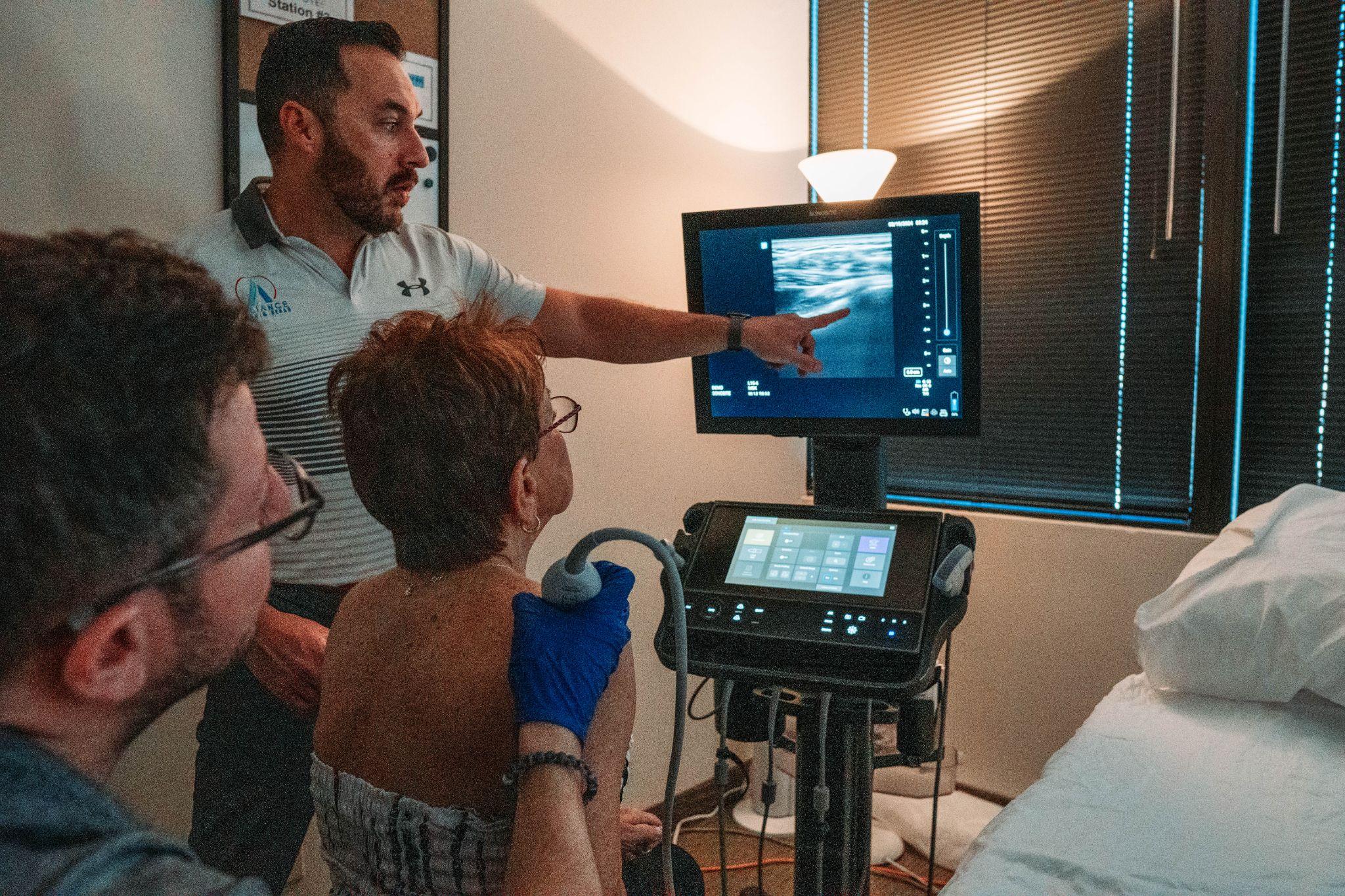
Practice Hands-On Scanning
Gaining practical experience through hands-on scanning sessions facilitated by experienced instructors is indispensable in mastering Point-of-Care Ultrasound (POCUS). While theoretical knowledge is essential, practical application is paramount for developing proficiency in ultrasound imaging techniques and interpretation of findings. Hands-on scanning sessions offer learners the opportunity to practice transducer manipulation, optimize imaging settings, and acquire images under the guidance of experienced instructors. This direct hands-on approach allows participants to receive immediate feedback, refine their scanning skills, and troubleshoot technical challenges in real-time. Moreover, hands-on sessions enable learners to develop a tactile understanding of anatomy and pathology, enhancing their ability to recognize and interpret ultrasound findings accurately. By actively engaging in a GCUS hands-on scanning workshop, healthcare professionals can build confidence and competence in performing POCUS examinations, ultimately improving patient care and clinical outcomes in their practice settings.

Interpret Ultrasound Findings
Learning how to interpret ultrasound images confidently and accurately is essential in mastering Point-of-Care Ultrasound (POCUS). It involves acquiring a comprehensive understanding of anatomical structures, normal variants, and pathological findings relevant to the clinical context. Through dedicated training and practice, healthcare professionals develop the ability to recognize subtle nuances in ultrasound images and differentiate between normal and abnormal findings. Interpretation skills are mastered through exposure to a wide range of clinical cases, supplemented by didactic education and hands-on experience. Confidence in interpretation grows as clinicians gain proficiency in identifying key landmarks, assessing image quality, and correlating findings with patient history and clinical presentation. Continuous learning and ongoing feedback from experienced mentors further refine interpretation skills, enabling healthcare professionals to make informed diagnostic decisions and guide patient management effectively using POCUS. Ultimately, confident and accurate interpretation of ultrasound images enhances diagnostic accuracy, improves patient care, and optimizes clinical outcomes in diverse medical settings.
Integrate POCUS into Clinical Practice
Integrating Point-of-Care Ultrasound (POCUS) into clinical workflows enhances patient care across medical specialties. Key steps involve identifying clinical scenarios where POCUS is valuable, establishing standardized protocols, and training clinicians in relevant techniques. Equipping teams with portable ultrasound machines ensures immediate access to imaging resources. Integrating POCUS findings into diagnostic and therapeutic decisions improves accuracy and patient outcomes. By incorporating POCUS, healthcare providers deliver efficient and personalized care in diverse medical settings.
Gulfcoast Ultrasound Institute (GCUS) offers a variety of POCUS courses in different educational formats both at our education facility or yours. Individual one-on-one training is also available at the GCUS education facility.
Stay Updated and Engaged
Staying updated on the latest advancements in Point-of-Care Ultrasound (POCUS) is vital for healthcare providers to ensure excellence in patient care. Ongoing education opportunities like conferences, workshops, and online courses offer valuable insights into emerging trends and innovations in POCUS. These activities include expert-led lectures, hands-on training, and case-based discussions to enhance skills in ultrasound imaging. Subscribing to reputable medical journals and online resources dedicated to POCUS keeps clinicians informed about recent research findings and best practices. Engaging in peer collaboration and networking fosters knowledge exchange and continuous learning. Prioritizing ongoing education in POCUS enables healthcare providers to enhance clinical practice and improve patient outcomes across various settings.
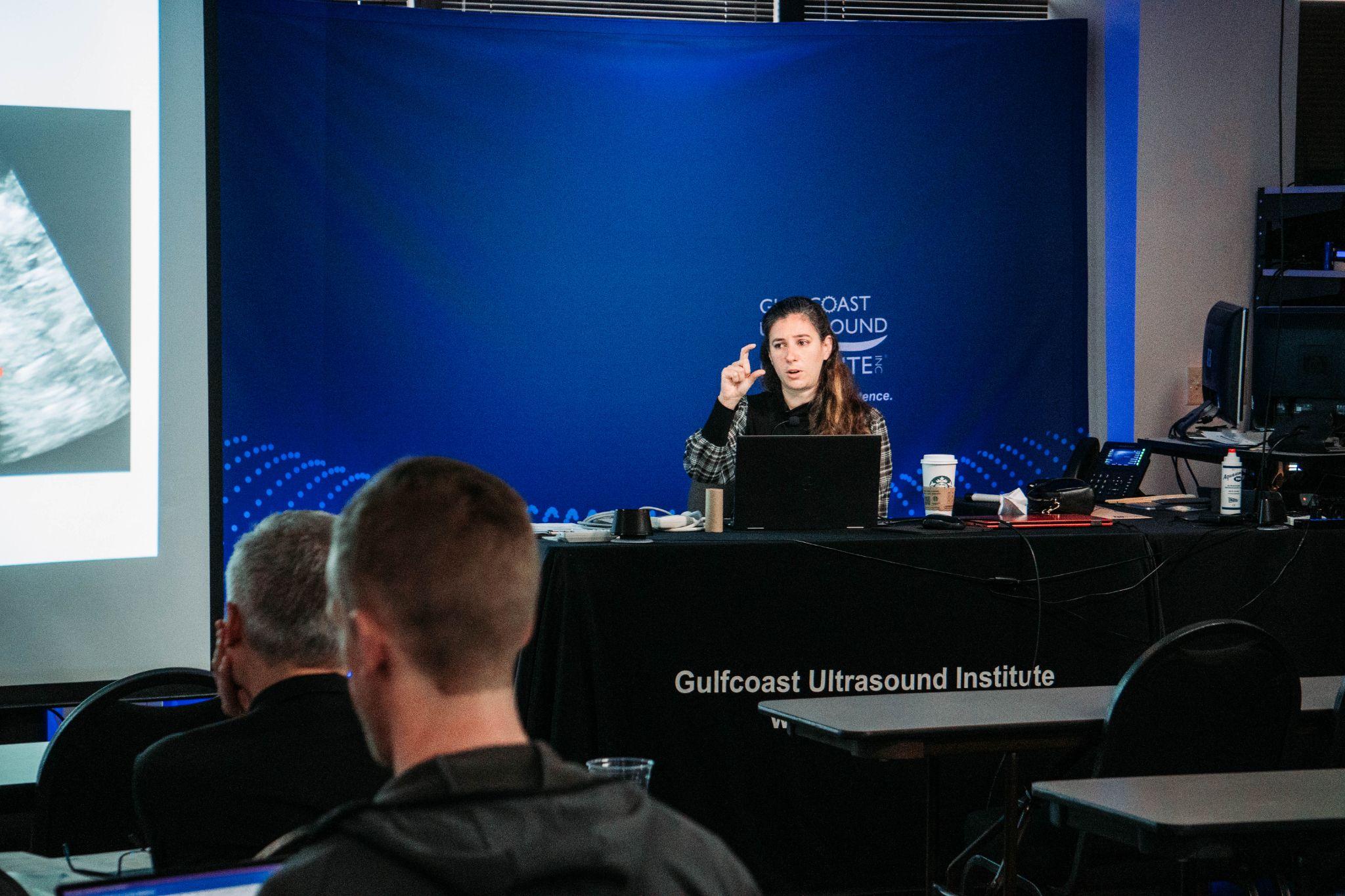
POCUS Advantages
Point-of-Care Ultrasound (POCUS) offers several advantages over traditional imaging modalities, making it a valuable tool in clinical practice. One significant advantage is its ability to expedite diagnosis and decision-making at the point of care. Unlike traditional imaging techniques that often require scheduling appointments and waiting for results, POCUS can provide real-time imaging directly at the bedside, allowing clinicians to quickly assess patients and promptly initiate appropriate interventions promptly. Additionally, POCUS serves as a dynamic imaging modality that can guide procedures in real-time. Whether performing nerve blocks, central line placements, or joint aspirations, clinicians can use ultrasound imaging to visualize anatomical structures and needle trajectories, enhancing procedural accuracy and reducing the risk of complications. Furthermore, POCUS has been shown to improve patient outcomes by facilitating early diagnosis, guiding timely interventions, and optimizing patient management strategies. Its portability, versatility, and ability to provide immediate feedback make POCUS an invaluable tool in various clinical settings, ultimately leading to enhanced patient care and improved clinical outcomes.
Understanding POCUS Certification
Importance of Certification
POCUS education is fundamental for healthcare professionals as it equips them with the essential knowledge and skills required to proficiently perform ultrasound examinations. These educational programs not only impart theoretical understanding but also provide hands-on training, allowing practitioners to develop expertise in probe manipulation, image acquisition, and interpretation. Through comprehensive coursework covering topics such as ultrasound physics, anatomy, image optimization, and clinical applications, healthcare professionals gain a deep understanding of the principles and techniques essential for effective ultrasound imaging.
Certification not only validates an individual's competence but also enhances their credibility and trustworthiness among patients, colleagues, and employers. It provides assurance that the practitioner has undergone rigorous training and has met established standards of proficiency in POCUS. This recognition not only fosters confidence in the practitioner's abilities but also contributes to improved patient care and clinical outcomes.
Training Curriculum
Courses for POCUS education typically encompass a comprehensive range of core components designed to equip healthcare professionals with the knowledge and skills necessary to perform ultrasound examinations proficiently. These courses often include a combination of hands-on training, didactic sessions, and various assessment methods to ensure comprehensive learning.
- Hands-on Training: These sessions provide practical experience in probe manipulation, image acquisition, and interpretation under experienced instructors' guidance.
- Didactic Sessions: Didactic sessions cover essential topics such as ultrasound physics, anatomy, image optimization, and clinical applications relevant to the participant's specialty or area of interest. Assessment methods may include written examinations, practical assessments, and case-based evaluations to evaluate participants' proficiency and competence in ultrasound imaging.
- As the leading accredited ultrasound education provider, GCUS offers POCUS programs in a variety of education formats to best meet the needs of the individual or group of providers. All of the hands-on courses, provide the lowest participant to instructor ratio (=3:1) in the industry, to ensure the learner obtains the maximum amount of skills training and individual attention.
By incorporating these core components into education courses, healthcare professionals gain the necessary expertise to perform POCUS examinations effectively and accurately, ultimately enhancing patient care and clinical outcomes.

